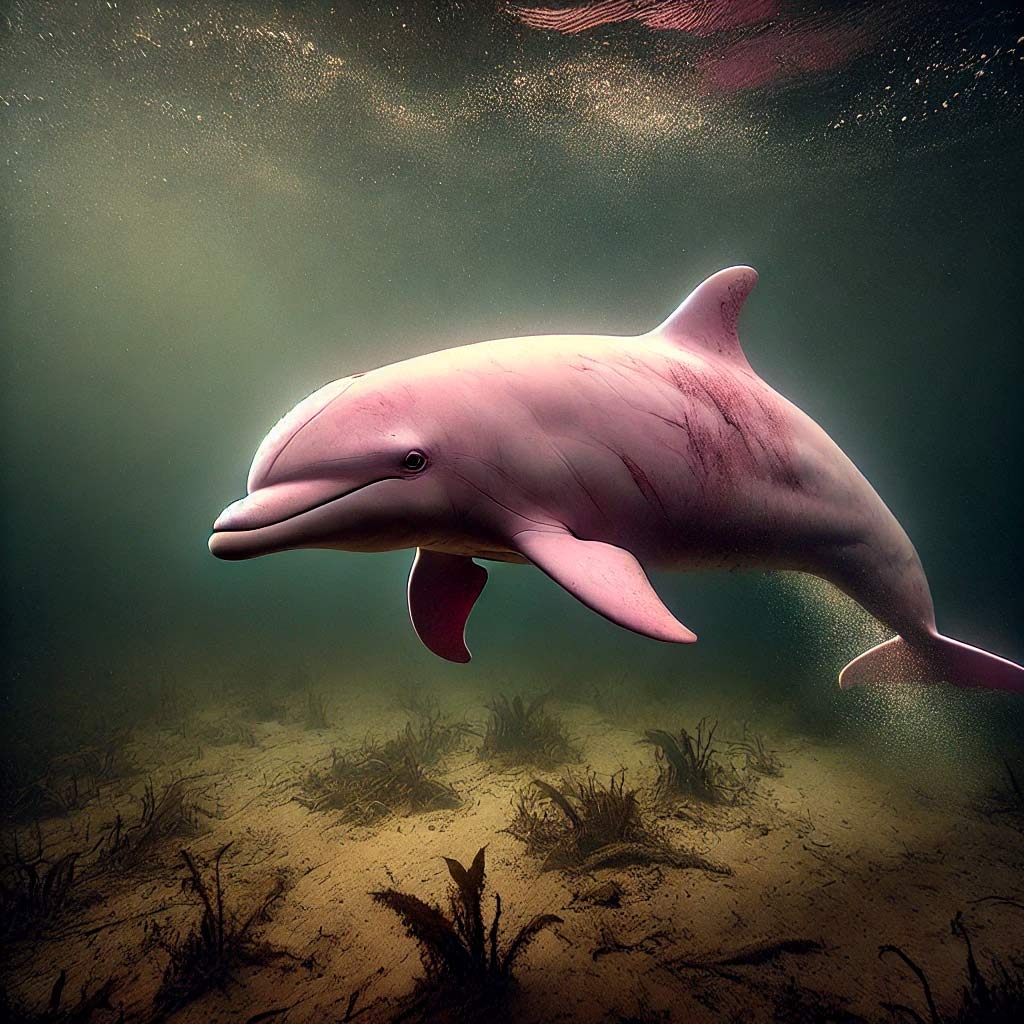In Brazil, the pink dolphin is more than an animal; it’s a legend steeped in mystery, romance, and transformation. Let’s dive into the captivating story of the Boto Cor de Rosa, discover why these dolphins are pink, and explore the cultural impact of this beloved Amazonian myth.
What is the Legend of the Boto Cor de Rosa?
The legend of the Boto Cor de Rosa is a well-known Amazonian tale that revolves around a mythical version of the pink dolphin. According to the legend, the pink dolphin can transform into a handsome young man during the night. Once transformed, he often visits local villages during festive gatherings and celebrations, where he is known to charm and woo young women. But, as dawn approaches, he returns to his dolphin form, slipping back into the waters of the Amazon.

Here’s how the legend typically unfolds:
- The Transformation: At dusk, the pink dolphin is said to transform into an attractive man, often dressed in white to mask his true identity. In some versions of the tale, he even dons a hat to cover his tell-tale dolphin blowhole, which remains on the top of his head even in human form.
- Charming Villagers: As a young man, the Boto captivates women with his allure and charm. The legend warns young women to be cautious at dances and celebrations, as the mysterious man they’re enchanted by might actually be the Boto.
- Return to the River: After spending the night at the celebration, the Boto must return to the river by morning. As the sun rises, he shifts back to his dolphin form, diving back into the depths of the Amazon.
This legend is deeply ingrained in Brazilian folklore and carries a message for those who live near the Amazon River: beware of mysterious strangers and their enchanting charm, especially during the festivities. Over time, the tale has served both as a cultural myth and a cautionary story for young women in riverside communities.
Why Are Dolphins Pink in Brazil?
Beyond the enchanting myth, pink dolphins in Brazil stand out due to their unusual color. Unlike the gray dolphins found in oceans, these dolphins exhibit a pink hue that has both biological and environmental causes.
- Natural Pigmentation: Amazon River dolphins, also known as Botos, naturally have a pinkish color due to unique pigmentation. This coloration can vary from a light blush to a more intense pink, depending on the individual dolphin, age, and other environmental factors.
- Habitat and Behavior: These dolphins inhabit the Amazon and Orinoco river systems, which are characterized by murky, sediment-rich waters. It is believed that the dolphin’s pink coloration helps them blend into these waters, providing them with a form of camouflage from potential threats.
- Age and Excitement: Interestingly, the pink hue of the Boto Cor de Rosa can become more pronounced as they age or even intensify in moments of excitement or aggression. Young dolphins tend to be grayer, and as they grow older, their coloration becomes more vibrant.
- Environmental Influence: Factors such as diet and the river conditions can also influence the shade of pink in these dolphins. Warm, muddy waters with rich sediment content can enhance the pink appearance, adding to the allure of these rare and beautiful creatures.
The Boto Cor de Rosa is more than just a unique species of dolphin; it’s a creature surrounded by magic, mystery, and a vibrant cultural history that spans generations in Brazil. From its transformation into a handsome stranger to its striking pink hue, the legend of the pink dolphin continues to captivate people around the world. This tale is a reminder of the power of folklore and the deep connection between nature and storytelling in Amazonian culture. Next time you hear about the pink dolphins of the Amazon, you’ll know there’s a bit more magic swimming beneath the surface.











